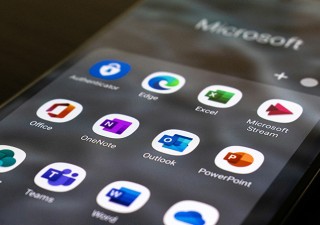Patentability Exclusion of Methods of Treatment, Diagnosis and Surgery in India
08 October 2012

The Indian pharmaceutical sector has been undergoing rapid changes since India became a member of the World Trade Organisation in 1995 and the Indian Patents Act underwent a series of amendments to honor the country’s commitment to conform to international norms. In the past, many multinational pharmaceutical companies maintained a minimal presence in India due to absence of product patents and the presence of rigid price controls in the country. However, the 2005 amendment of the Indian Patents Act, 1970 introduced pharmaceutical product patents in the country, which opened the doors for multinationals to enter the Indian pharma market.
Additionally, the Indian pharmaceutical companies, which initially focused on making generic versions of known products, are now focusing and investing a great deal of capital in research and development and drug discovery. Consequently, there has been an increase in the number of patent applications filed at the Indian Patent Office for inventions relating to new chemical entities, pharmaceutical formulations, new drug delivery systems, etc. However, not all inventions are patentable within the meaning of the Indian Patents Act, 1970. Sections 3 and 4 of the Indian Patents Act lists non-patentable inventions. One such section pertinent to the pharmaceutical sector is Section 3(i).
Section 3 (i) of the Patents Act, 1970 states the following are not inventions:
“any process for the medicinal, surgical, curative, prophylactic, diagnostic, therapeutic or other treatment of human beings or any process for a similar treatment of animals to render them free of disease or to increase their economic value or that of their product”
As per Section 3(i), methods of surgery for therapeutic or cosmetic purposes for humans or animals are not considered patentable.
In general, any operative procedure performed on a human or animal body requiring the skill, knowledge and expertise of a surgeon would be regarded as surgery, be it for therapeutic treatments or non-curative or cosmetic treatments. Further, any experimental or research purposes involving the removal or replacement of organs or tissues from a living donor is, if carried out by surgery, regarded as a surgical treatment. Thus any claim involving a surgical step or any step which can be construed as a surgical step is not acceptable.
The category “diagnostic” was included in Section 3(i) by virtue of the Indian Patents (Amendment) Act, 2002. Phrased differently, Section 3(i) means any diagnostic process that does not render humans or animals free of any disease or does not increase their economic value or that of their products should be patentable.
Also, as per the draft Manual of Indian Patent Practice and Procedure, 2008, methods of diagnosis practiced on a human or animal body – that is, ‘in vivo’ diagnostic procedures – are not patentable, whereas methods of diagnosis performed on tissues or fluids which have been permanently removed from the body – ‘in vitro’ diagnostic procedures – are not excluded from patentability.
However, it is observed that objections are raised during prosecution for most of the method of diagnosis claims whether by ‘in vivo’ or ‘in vitro’ procedures. Nevertheless, patents are granted for in vitro diagnostic methods and more so for the diagnostic kits.
Section 3(i) also excludes method of treatment claims due to the reason of non-compliance with the industrial applicability requirement provided by Section 2(1)(j) of the Indian Patents Act. Earlier, claims relating to method of treatment of plants were not allowed but by virtue of the Indian Patents (Amendment) Act, 2002, method of treatment of plants has now become patentable.
Countries like the United States allow method of treatment claims if they satisfy the conditions of eligibility irrespective of compliance with industrial applicability requirement. Further, European countries do not allow such claims under Article 52(4) of the European Patent Convention. But the scope of such exclusion has been narrowed and such claims are allowed in the form of “Use of a substance or composition X for the manufacture of a medicament for therapeutic application Z,” known as Swiss-type claims. However, in India, as per Section 2(1)(j) of the Patents Act, only product or process claims are patentable, and such use claims are not acceptable in India.
In the wake of the non-allowance of patents for methods of treatment or use of compounds, the term of patent rights cannot be extended in India by such evergreening strategies which are possible elsewhere. Nonetheless, claims directed towards medicinal preparations or formulations for treatment of specific diseases may be patentable. Also, medical devices for surgical, diagnostic or curative purposes are patentable in India.
Krishna & Saurastri
K.K. Chambers, 1st Floor,
Sir P.T. Marg, Fort,
Mumbai 400 001, India
T: +91 22 2200 6322
F: +91 22 2200 6326
E: info@krishnaandsaurastri.com
W: www.krishnaandsaurastri.com






